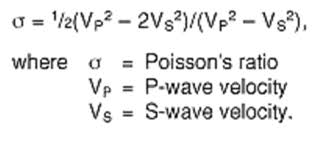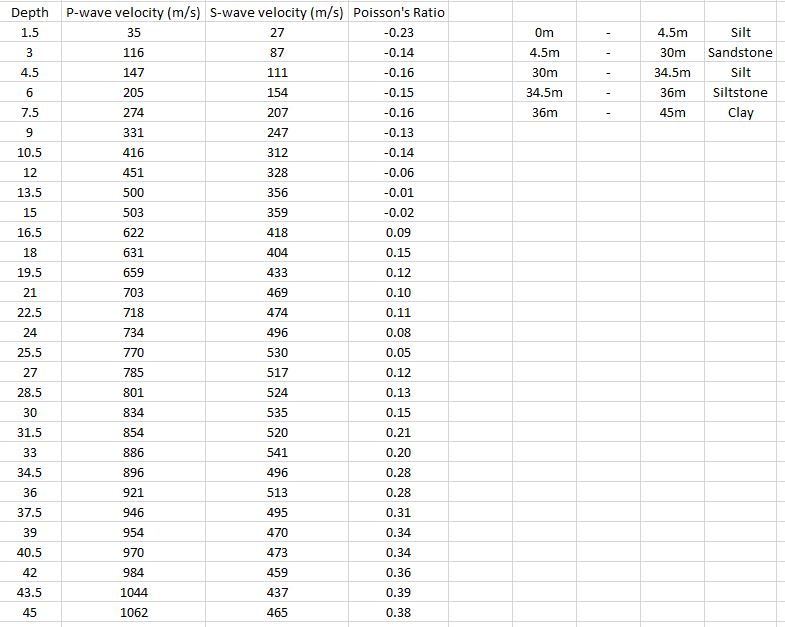Hi
We conducted downhole seismic tests and we're able to get p- and s-wave velocities. When we calculated the Poisson's ratio at each depth, there were negative values at various depths. Most materials at these depths are soil and there are some depths where the material is rock. What could could these results mean? What does a negative Poisson's ratio of soil and rock mean?
Thank you.
We conducted downhole seismic tests and we're able to get p- and s-wave velocities. When we calculated the Poisson's ratio at each depth, there were negative values at various depths. Most materials at these depths are soil and there are some depths where the material is rock. What could could these results mean? What does a negative Poisson's ratio of soil and rock mean?
Thank you.


